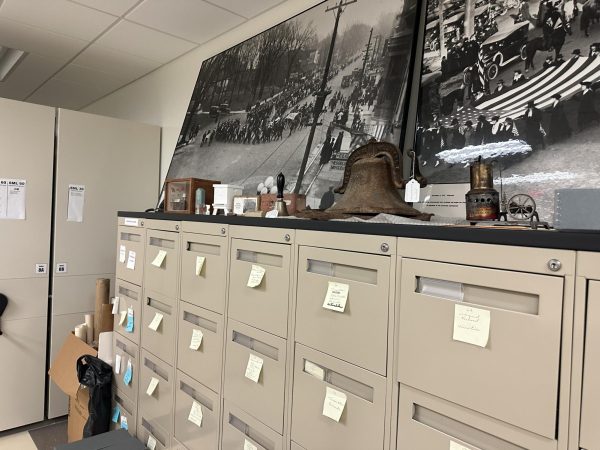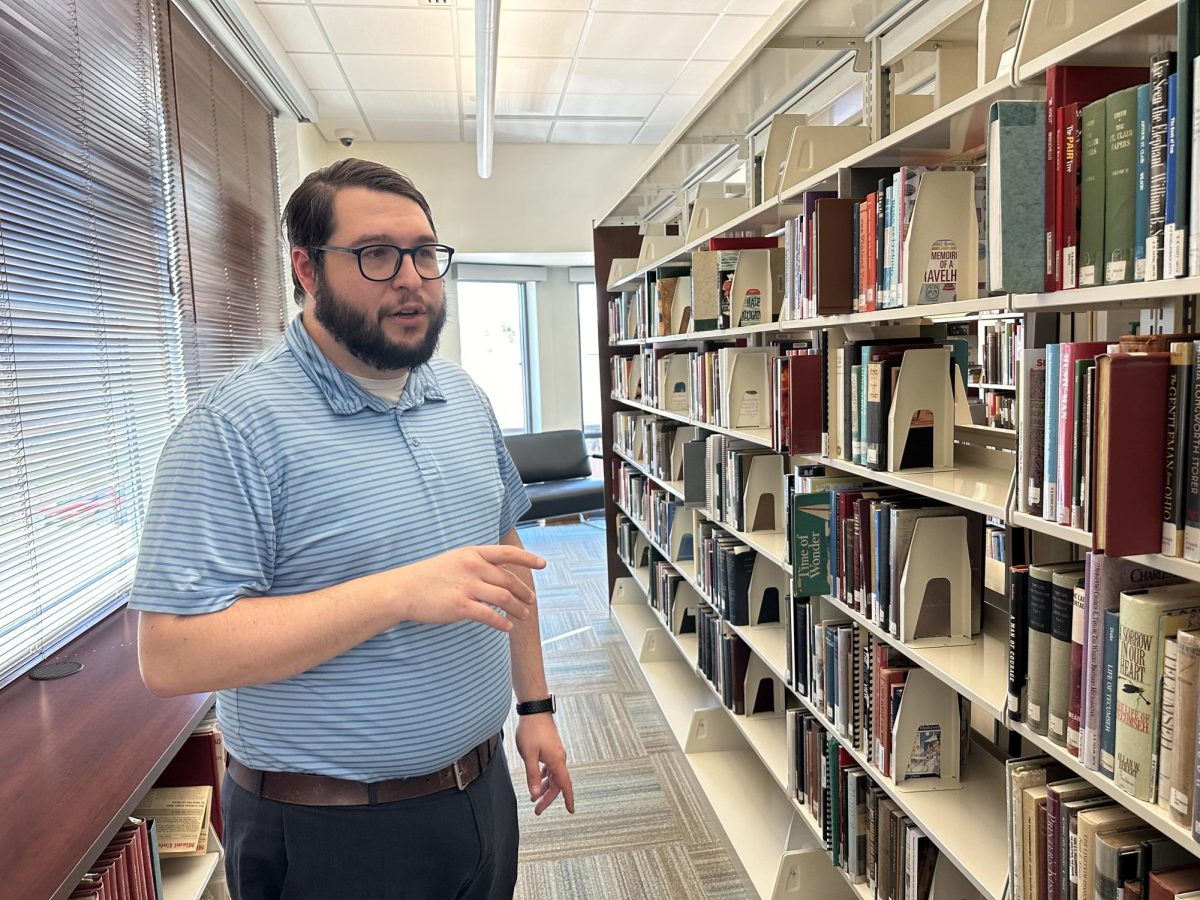On the top floor of Oxford Lane Library, a small team works to preserve the local history of Oxford and surrounding areas.
Library manager and historian Brad Spurlock describes the Smith Library of Regional History as an “archival collection.” According to Spurlock, the collection includes manuscripts, old maps and lots of family records, with items dating back anywhere from colonial times to the 20th century.
“The oldest thing that we have in our collection is a religious text from 1662,” Spurlock said. “We try to preserve things like this the absolute best we can.”
The Smith Library was built from donations from local residents and historians. Smith is one of two historical repositories hosted by Lane Libraries. The other is the Cummins Local History Room in Hamilton.
Spurlock and two part-time employees handle requests from patrons in-person and through the library’s website. When patrons make a request, Spurlock says, it’s usually for one of two reasons.
“When people visit in person, it’s usually for genealogy research, trying to discover their family history,” Spurlock said. “When we get remote requests, it’s usually for property histories, and that has a very rigid process involving intensive research.”
One project Spurlock recalled involved a patron whose family member was in the hospital with a rare disease. The patron asked the library to research past family members to find medical histories and past causes of death, which the library was able to do.
Spurlock has given several presentations in the area about Hamilton’s Italian heritage and its pre-Prohibition beer, liquor, ice and tavern industries.

According to Spurlock, the library managed over 600 patron requests in 2023. One of those patrons, local resident Jill Evans, said she has been using the resources of the library for 25 years.
“I first used the Smith Library in 1998 when I established the Morgan Township Historical Society,” Evans said. “I don’t think many people realize how wonderful a resource it is, and I’ve been able to complete many projects with them.”
These projects included the creation of a historical driving tour of Morgan Township, made possible by the property research the Smith Library conducted, she said.
The library also connects with Miami University for occasional events as well as providing primary sources for classes to use. Primary sources include historical records such as newspapers, family documents and more available digitally.
This is history professor Jazma Sutton’s first semester using the library. She said it was a great experience for her students.
“I’m teaching two classes that are collaborating with the library, the Black Midwest and Black Women in America,” Sutton said. “As a historian of Black women’s history, often it’s very difficult for us to find records of our lives, but the library really helps.”
Primary sources the classes have used include newspapers, property records and various registrations, among others. While more delicate sources are kept away from public access, the library is currently in year four of a projected seven or eight digitization project that will make most of its collection available online.
Spurlock says that the library’s staff doesn’t take the role of preservation lightly.
“It’s a collaboration from start to finish, and we really enjoy the work we do,” Spurlock said. “Some of these records require a lot of attention to survive, and we feel it’s important enough to merit our time and energy.”
The Smith Library of Regional History is open most days from 10 a.m. until 5 p.m. and is free and open to the public.








